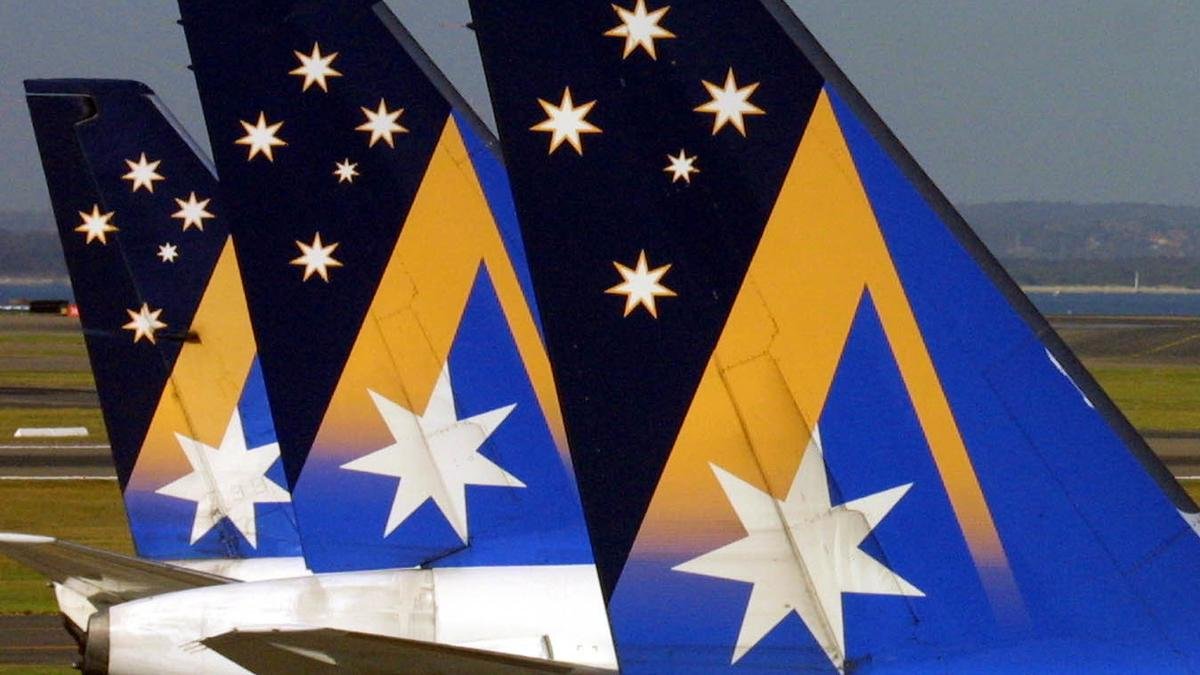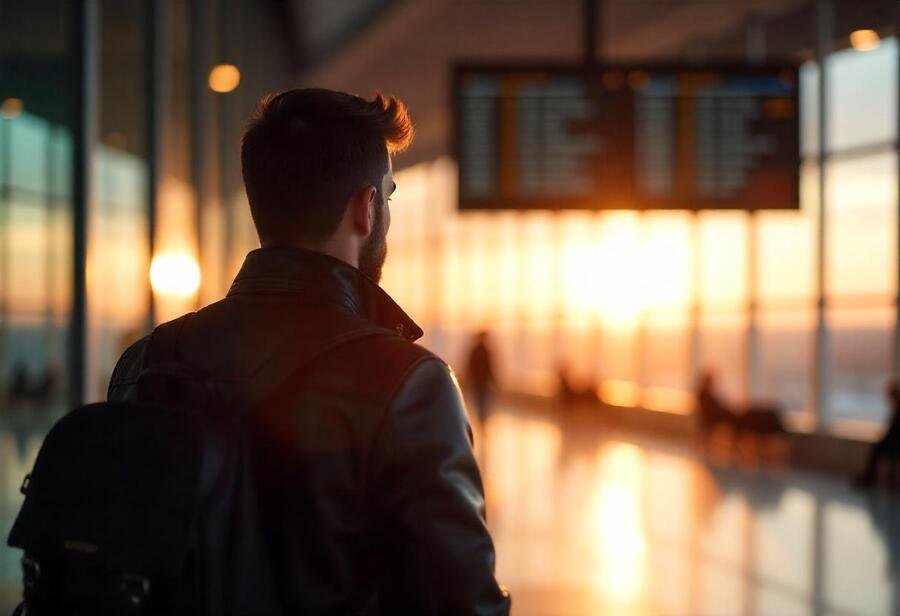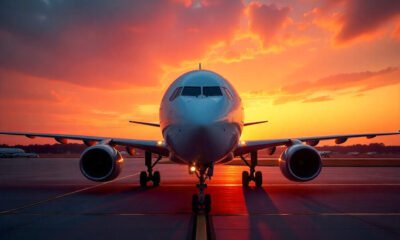AI in Travel
Malaysia Unveils Smart AI Tourism Melaka to Revolutionize Visitor Experiences with Cutting-Edge Technology

Thursday, July 17, 2025
In a bold move to transform its tourism landscape, the state of Melaka is preparing to roll out the Smart AI Tourism Melaka initiative by September 2025. This cutting-edge program integrates artificial intelligence to elevate the tourism experience, making it more engaging, interactive, and accessible for visitors. With a focus on digital innovation, the initiative is poised to enhance Melaka’s reputation as a forward-thinking tourist destination while strengthening the local tourism ecosystem.
A New Era for Tourism in Melaka
The Smart AI Tourism Melaka initiative is designed to provide tourists with an enhanced way to explore the state’s rich cultural heritage, historical landmarks, and modern attractions. The program leverages AI technology to deliver a more personalized and seamless travel experience, ensuring that visitors can easily navigate and discover the best of what Melaka has to offer. This initiative will act as a virtual tour guide, offering interactive content in multiple languages to cater to the diverse needs of international visitors.
Key features of the initiative include:
- AI-powered Assistance: Tourists will have access to a virtual guide that can assist with finding information on various attractions, providing details in multiple languages.
- Interactive Content: Unlike traditional signage, the AI system allows for real-time, two-way communication, offering an immersive experience with enriched content.
- QR Code Integration: The use of QR codes will enable users to scan and translate content instantly, enhancing their understanding of the cultural and historical significance of various sites.
The goal is to provide visitors with a more personalized, engaging experience that is accessible and informative. By using artificial intelligence tourism solutions, Melaka hopes to attract a wider range of tourists, including those who are tech-savvy and looking for more innovative ways to explore the city.
Strengthening Melaka’s Digital Tourism Infrastructure
The Smart AI Tourism Melaka initiative is part of a broader strategy to boost digital tourism across the state. This strategy aligns with the government’s efforts to improve connectivity and infrastructure, ensuring that Melaka remains a competitive destination in the digital age. Chief Minister Datuk Seri Ab Rauf Yusoh highlighted the significance of the initiative, noting that it will not only make the tourism experience more convenient but also enhance the overall accessibility of the state’s attractions.
Melaka’s robust telecommunications infrastructure supports this project, with the state already achieving impressive network coverage:
- 99.97% 4G coverage in populated areas
- 89.7% 5G coverage in key areas
This strong connectivity ensures that the Smart AI Tourism Melaka initiative will operate smoothly, offering high-speed internet and reliable digital services to tourists.
The state government has ambitious plans for the future, targeting 100% 4G and 5G coverage in all populated areas by 2027. This commitment to connectivity will further bolster Melaka’s position as a leader in Melaka digital tourism and ensure that tourists can fully benefit from the technological advancements on offer.
Partnerships Driving Innovation
A crucial element of the Smart AI Tourism Melaka initiative is the collaboration between the public and private sectors. To bring this project to fruition, Melaka ICT Holdings Sdn. Bhd. (MICTH) has partnered with major telecommunications companies such as Rohas Euco Industries Berhad, Maxis Broadband Sdn. Bhd., and U Mobile Sdn. Bhd. These partnerships will ensure that the necessary technological infrastructure is in place to support the AI-powered tourism system.
These collaborations are designed to provide tourists with the best possible experience, incorporating interactive tourism guides and other digital tools to enhance their visits. Through these efforts, Melaka aims to create a tourism environment that is not only more accessible but also more interactive and enjoyable.
What This Means for the Future of Tourism
The introduction of the Smart AI Tourism Melaka initiative is a significant step forward in the state’s effort to modernize and innovate its tourism sector. By integrating tourism experience technology and artificial intelligence, Melaka is setting the stage for a new era of travel, where technology enhances every aspect of the visitor journey. The initiative will also serve as a model for other regions looking to incorporate AI into their tourism offerings.
The potential benefits of this initiative include:
- Improved Visitor Experience: Tourists will have easy access to information and personalized recommendations, making their trips more enjoyable and enriching.
- Increased Accessibility: With multilingual content and interactive features, the program will be accessible to a global audience, breaking down language barriers and enhancing communication.
- Stronger Tourism Economy: By attracting a tech-savvy audience, Melaka stands to see an increase in tourism numbers, contributing to the growth of the local economy.
As this initiative unfolds, it is expected to position Melaka as a leader in the digital tourism space, showcasing the power of AI-powered tourism solutions in transforming how people explore new destinations.
Conclusion: A Smarter Future for Melaka’s Tourism
The Smart AI Tourism Melaka initiative represents a bold step toward the future of tourism, integrating the latest in digital and AI technology to offer a truly modern experience. By combining historical and cultural exploration with cutting-edge technology, Melaka is set to become a hub for innovative tourism. This project will not only enhance the experience for visitors but also strengthen the state’s position as a forward-thinking leader in artificial intelligence tourism and digital tourism. As the initiative moves forward, Melaka is setting the stage for a future where technology and tradition seamlessly merge, offering tourists an
AI in Travel
Ansett Australia revived as AI-powered travel platform two decades after carrier’s collapse

The Ansett name “is back”, but not as Australians will remember the former airline.
Ansett Australia was once the country’s second-largest carrier but collapsed into administration after suffering financial troubles in 2001.
Its final flight was recorded early the following year.
Know the news with the 7NEWS app: Download today
Now, more than 20 years later, the brand is being revived not as an airline but as an AI-powered holiday booking platform called Ansett Travel.
Melbourne-based entrepreneur Constantine Frantzeskos said it was designed to be a “hyper-personalised” travel agent that suggests trips and itineraries based on your preferences, calendar events and budgets.
“I didn’t just acquire a lapsed trademark and domain, I resurrected trust embedded deep in collective memory,” Frantzeskos said on Monday.
“The original Ansett served Australians beautifully for 65 years before collapsing in 2002, leaving a void in reliability and brand warmth.
“I believe that legacy still matters, and that it’s deserving of being reimagined for modern travellers.
“Ansett Travel isn’t about replicating the past, it’s about re‑engineering it through AI as the core, not as an afterthought.”
What Ansett Travel will offer
Frantzeskos has previously worked with Emirates, Dubai Tourism and Visit Victoria, and this time partnered with Victorian travel start-up Travlr.
He said the new platform is “like the Costco of travel”.
It is open to everyone “but if you want the really good stuff” — flights, hotels and holidays at near-wholesale prices — you will need to join Ansett VIP, he said.
An Ansett VIP membership is $99 a year.
Not all AI features are up and running but Frantzeskos said plans for things like auto-generated itineraries, pre-trip alerts, and personalised loyalty experiences are on the cards.
“Today’s travel platforms are reactive,” he said.
“You search, compare, click. Ansett seeks to flip that model.
“It’s designed to anticipate when users need a break – school holidays, anniversaries, executive downtime, great weather for a weekend away – and offer options before you even think to ask.
“It’s not replacing human agents; it’s doing what scale, data and logic do best – with finesse, not friction.”
The website is already live and offering travel deals for destinations including Las Vegas, Bali, Tokyo and Athens.
Before its collapse, Ansett reportedly flew about 10 million passengers annually.
More than 16,000 jobs were lost as a result of the company’s downfall.
AI in Travel
AI Meets Travel: The Return of Ansett as an Intelligent Global Booking Platform

Monday, July 28, 2025
More than 20 years after it disappeared from our skies, Ansett – once the face of air travel in Australia – has been resurrected in a design that feels decidedly futuristic. But now, it’s not flying planes. The world’s favourite airline has reinvented themselves to become a 100% AI-based online travel agency which links you to the most efficient, affordable and personalised booking services in the world.
The resurrection is by Melbourne entrepreneur Constantine Frantzeskos who spotted the potential of the defunct brand and pounced when time was up on its trademark. He wasn’t aiming to get Ansett back in the air but rather to leverage its track record of reliability in the travel tech business.
From National Airline to Tech-Forward Agency
Originally founded in 1936, Ansett Airlines, later known as Ansett Australia, was one of the country’s most trusted domestic carriers. It held a prominent position in Australian life, with major sponsorship roles including the AFL and the 2000 Sydney Olympics. However, due to financial turbulence and market shifts, Ansett entered voluntary administration and ceased all operations in 2002. This closure impacted more than 16,000 employees and marked the end of an aviation era.
Frantzeskos, known for his work in the Australian digital innovation space, has now repurposed the Ansett legacy into Ansett Travel, Australia’s first entirely AI-operated travel booking platform. The company was launched following the successful acquisition of the expired Ansett trademark.
A Travel Agency Built by AI
According to information available on the official Ansett Travel website and government-verified domain registration records, the company leverages a combination of large language models, predictive pricing engines, and recommendation algorithms to provide users with an intelligent, intuitive booking experience.
Frantzeskos explained via a LinkedIn announcement that he had “assembled a fleet of AI agents” and built the agency with full tech integration using tools provided by the Travlr platform—a known player in online travel booking systems. The goal, he says, is to redefine how Australians interact with travel planning by replacing conventional steps with intelligent automation.
This smart technology enables the platform to streamline complex tasks that most traditional Online Travel Agencies (OTAs) still perform manually. It can suggest tailored itineraries, adjust pricing in real-time, and provide instantaneous support—without requiring human travel agents behind the screen.
A Global Network with Local Identity
Ansett Travel boasts access to over 500 airline carriers and three million hotels worldwide, positioning it as a serious player among travel platforms. While still new, the agency’s digital infrastructure is built to compete with global platforms by offering faster results, superior customisation, and fully automated service.
The platform’s emphasis is not just on function but also on rebuilding trust with Australian travellers. The tagline: “Reviving a trusted name, reimagined with a new identity”, underlines this dual mission—honouring its legacy while embracing the digital future.
The Rise of AI in Travel
The relaunch of Ansett aligns with global shifts toward automation in the travel sector. As major online booking systems like Expedia and Booking.com increasingly experiment with AI tools, Ansett Travel positions itself as Australia’s local answer to this evolving trend—offering a homegrown solution built from scratch with AI at its core.
Importantly, the Australian Government’s Digital Economy Strategy 2030 supports such innovation, outlining incentives and frameworks that promote digital entrepreneurship and the development of advanced consumer services through artificial intelligence
What This Means for Travellers
For Australian travellers, the return of Ansett in a new form is both nostalgic and forward-thinking. While the airline will not take to the skies again, its reputation for customer service may live on—now reimagined through a digital lens.
The new platform promises:
- Fast and dynamic itinerary creation
- Predictive price adjustments based on demand
- AI-curated hotel and airline packages
- Zero-touch backend booking systems A Solo Founder’s Vision, A Nation’s Legacy
A Solo Founder’s Vision, A Nation’s Legacy
A single-founder business, Ansett Travel is a reinvention of a heritage airline and a disruptive, agile business model for the new travel economy. Frantzeskos’ reliance on automation has low overhead and high speed — an agile model that others in the burgeoning world of digital startups might follow.
For now, the skies are still stripped of Ansett’s planes — but the brand is once again on the map for Australian travel. Except now it’s not by runways, but by algorithms.
AI in Travel
Germany Travel Enters New Era As Lufthansa Introduces Game-Changing AI At Frankfurt

Monday, July 28, 2025
Germany travel just shifted into a bold new gear with the unveiling of a powerful AI-based system being implemented at Frankfurt by Lufthansa that could dramatically reduce delays, improve operations, and result in a significant reduction in carbon emissions. A new “seer” platform, developed by Lufthansa’s digital unit zeroG in partnership with Fraport AG, relies on real-time camera data to monitor and enhance all aspects of aircraft turnaround — from refueling to baggage handling. This innovative technology not only speeds up departures, it also contributes to the airline’s broader objective of sustainability, marking a prominent new milestone for smart, data-driven air travel revolution in Germany.”
Lufthansa Introduces Cutting-Edge AI System to Boost Turnaround Efficiency and Slash Emissions at Frankfurt Airport
In a groundbreaking move that fuses digital innovation with operational strategy, Lufthansa has rolled out an advanced AI-driven camera system named “seer” at Frankfurt Airport. This next-generation technology, developed by Lufthansa’s digital innovation arm zeroG, in close partnership with Fraport AG, the operator of Frankfurt Airport, is set to redefine how aircraft ground operations are managed. The ultimate goal: to drastically reduce turnaround times and minimize delays — while pushing forward the airline’s commitment to more sustainable air travel.
Real-Time Monitoring for Smarter Ground Operations
The “seer” system operates by using high-resolution, AI-powered cameras to observe and analyze every critical step in aircraft handling at the gate — from the precise moment refueling starts, to baggage being loaded and catering completed. Unlike manual monitoring or traditional data systems, the seer solution timestamps each activity in real time. These insights are then instantly made available to relevant teams, enabling ground staff to better coordinate tasks and identify bottlenecks early.
As of now, the system has been implemented at five aircraft stands, with plans to expand to 20 stands by the end of the third quarter of 2025. This expansion phase will cover a broader range of aircraft types and flight operations, helping Lufthansa test the scalability of the AI tool before a potential global rollout.
Transparency and Collaboration with Ground Teams
What sets “seer” apart is its collaborative data-sharing framework. The information gathered from the cameras isn’t siloed within Lufthansa. Instead, it’s integrated into a shared data platform accessible to Fraport AG and other airport ground handling partners. This shared ecosystem ensures that everyone involved — from ramp agents to gate supervisors — is operating from the same real-time information.
This level of transparency is critical. Ground operations at busy hubs like Frankfurt are often complex, involving multiple service providers and numerous moving parts. Even a short delay in a single process — such as lavatory servicing or cargo loading — can cascade into significant departure delays. With “seer,” Lufthansa and its partners can now proactively address these disruptions before they ripple through the network.
A Digital Push Backed by Google Cloud
The launch of “seer” is one of many steps Lufthansa is taking to transition into a more intelligent, data-led airline. It follows the Group’s broader digitalization drive, which includes a high-profile collaboration with Google Cloud. That partnership supports Lufthansa in refining multiple aspects of flight operations — from dynamic aircraft routing and predictive maintenance to AI-optimized crew scheduling.
Together, these innovations are transforming Lufthansa from a traditional legacy carrier into a forward-thinking, tech-savvy airline group. The integration of seer’s real-time analytics complements Google Cloud’s predictive models, resulting in smarter decision-making that improves not only punctuality but also safety and customer experience.
Environmental Benefits at the Forefront
Beyond just improving efficiency, Lufthansa’s digital shift is also motivated by environmental goals. The airline has committed to reducing its carbon footprint significantly, and initiatives like seer are key to this strategy.
By minimizing idle time at gates, reducing unnecessary engine use during taxiing, and tightening turnaround windows, seer contributes directly to lower fuel consumption and fewer emissions. Lufthansa estimates that, once fully integrated across its network, the combination of AI-driven tools like seer and its cloud-based decision systems could cut up to 50,000 tonnes of carbon dioxide emissions per year.
This figure is not insignificant — it equates to the annual carbon footprint of thousands of passenger cars and demonstrates the potential of AI to play a pivotal role in aviation decarbonization.
Leading a Regional Transformation
While Lufthansa is not the first airline to experiment with AI, its in-house development strategy sets it apart. Rather than relying entirely on third-party vendors, Lufthansa Group has built much of its AI and analytics infrastructure from the ground up, led by its digital subsidiary zeroG. This allows greater customization, faster deployment, and closer alignment with operational needs.
Moreover, the close partnership with Fraport AG makes this a model for how airports and airlines can collaborate on innovation. If successful, seer could serve as a template for other hub airports across Europe and beyond — particularly those struggling with congestion and rising passenger volumes.
Future Potential and Expansion
Although seer is currently limited to Frankfurt, Lufthansa has signaled interest in expanding the system to other key hubs in its network. Munich, Zurich, and Vienna — where Lufthansa Group has strong operational presences — are likely candidates for future implementation. The modular nature of seer also means it could be adapted for various aircraft types and airport layouts with minimal disruption.
In the long term, seer could even incorporate machine learning algorithms that improve performance predictions, flag maintenance anomalies in real-time, or trigger alerts to crew supervisors when specific delays are imminent.
With the launch of the seer system, Lufthansa is not merely keeping up with industry trends — it is actively shaping the next chapter of global aviation. Combining real-time AI surveillance with cloud-based decision engines and an ethos of operational transparency, the airline is setting new benchmarks in turnaround efficiency and sustainability.
This progressive thinking symbolizes a new way legacy carriers can implement technology to do more than just make workflows more efficient and decrease the environmental footprint while upping the passenger experience. In aviation, where each minute and kilogram of fuel makes a difference, tools like seer may quickly become essential.
Germany travel is being transformed as Lufthansa rolls out an AI-powered system at Frankfurt Airport to speed up aircraft turnaround and reduce emissions. This innovation boosts efficiency, cuts delays, and supports the country’s push for smarter, greener aviation.
While Lufthansa soars its way through digital transformation, one thing is for sure: the skies belong to planes, but flying’s future is written in data.
-

 Brand Stories7 days ago
Brand Stories7 days agoBloom Hotels: A Modern Vision of Hospitality Redefining Travel
-

 Brand Stories2 days ago
Brand Stories2 days agoCheQin.ai sets a new standard for hotel booking with its AI capabilities: empowering travellers to bargain, choose the best, and book with clarity.
-

 Destinations & Things To Do1 week ago
Destinations & Things To Do1 week agoUntouched Destinations: Stunning Hidden Gems You Must Visit
-

 AI in Travel1 week ago
AI in Travel1 week agoAI Travel Revolution: Must-Have Guide to the Best Experience
-

 Brand Stories3 weeks ago
Brand Stories3 weeks agoVoice AI Startup ElevenLabs Plans to Add Hubs Around the World
-

 Brand Stories2 weeks ago
Brand Stories2 weeks agoHow Elon Musk’s rogue Grok chatbot became a cautionary AI tale
-

 Destinations & Things To Do2 days ago
Destinations & Things To Do2 days agoThis Hidden Beach in India Glows at Night-But Only in One Secret Season
-

 Asia Travel Pulse3 weeks ago
Asia Travel Pulse3 weeks agoLooking For Adventure In Asia? Here Are 7 Epic Destinations You Need To Experience At Least Once – Zee News
-

 AI in Travel3 weeks ago
AI in Travel3 weeks ago‘Will AI take my job?’ A trip to a Beijing fortune-telling bar to see what lies ahead | China
-

 Brand Stories3 weeks ago
Brand Stories3 weeks agoChatGPT — the last of the great romantics













You must be logged in to post a comment Login